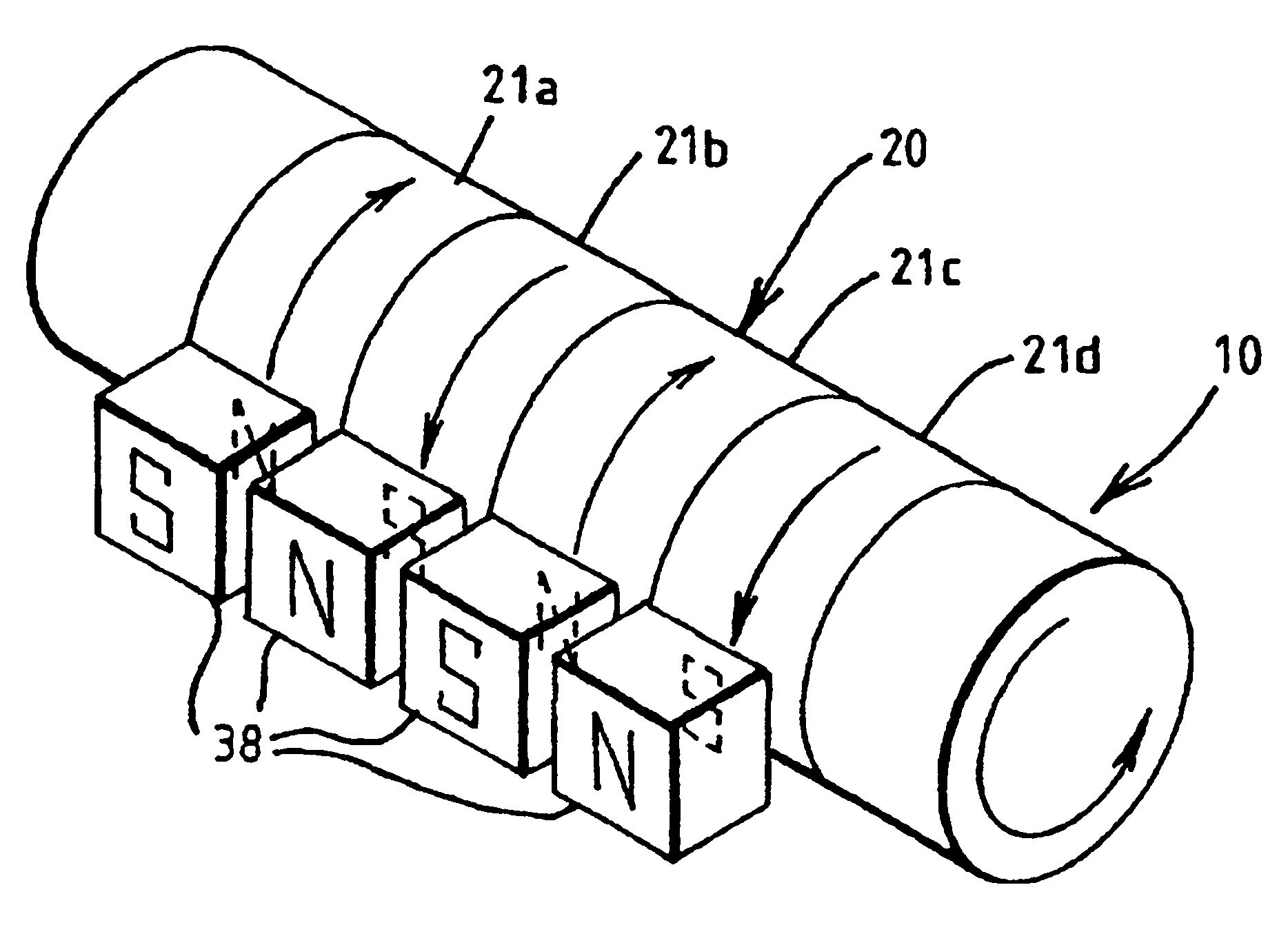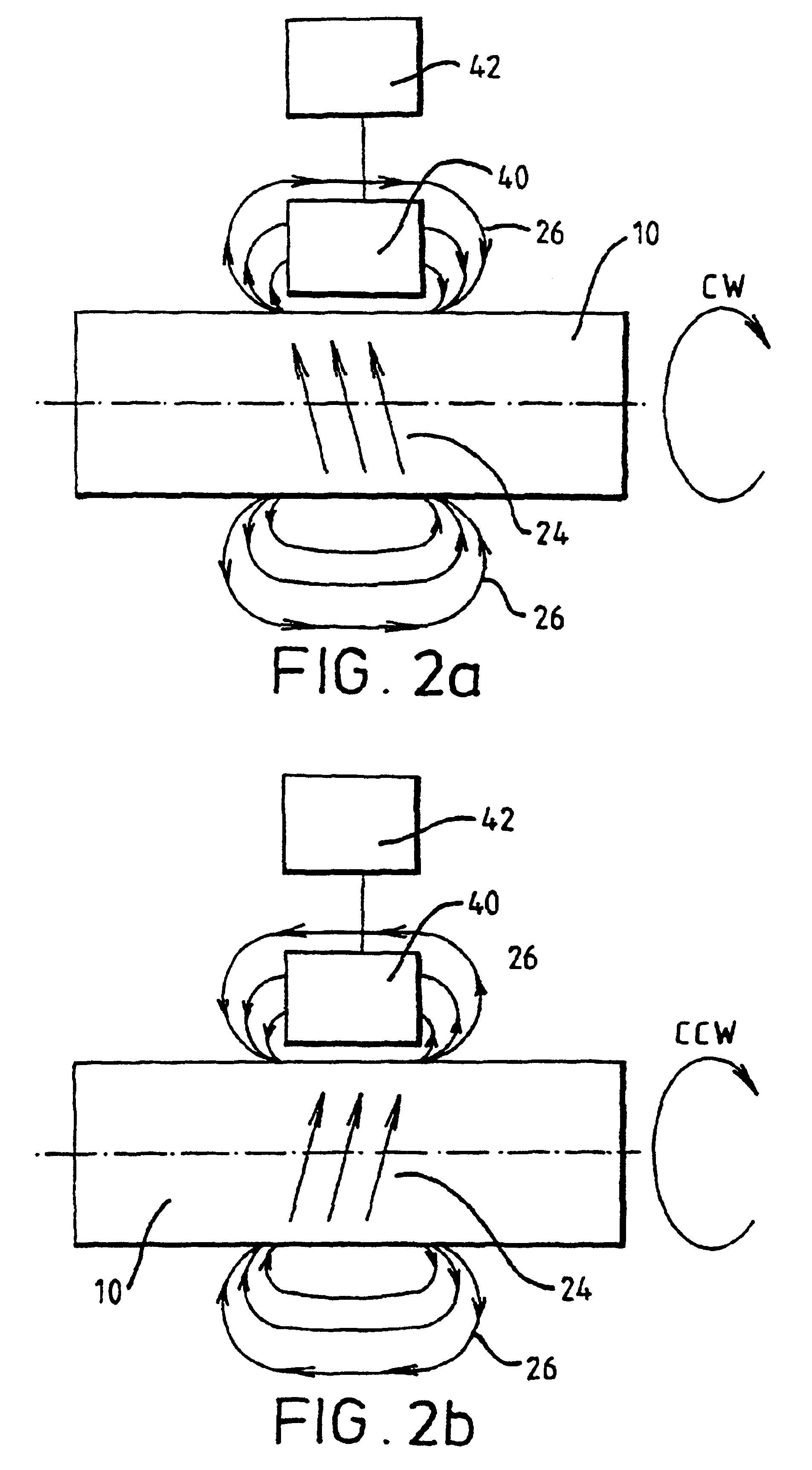Magnetising arrangements for torque/force sensor
a torque/force sensor and magnetic arrangement technology, applied in the direction of work measurement, measurement devices, instruments, etc., can solve the problems of inability to provide useful flux emanating from the ring, increase costs, and difficulty in implementation
- Summary
- Abstract
- Description
- Claims
- Application Information
AI Technical Summary
Problems solved by technology
Method used
Image
Examples
Embodiment Construction
FIGS. 1a and 1b illustrate a shaft 10 of solid circular cylindrical cross-section rotatable about its longitudinal axis A--A. The shaft is of a magnetisable material. The shaft is assumed to be stationary and to have no torque applied to it about the axis of rotation. The shaft has an axially inner magnetised portion 20 bounded by outer non-magnetised portions 22. Thus as shown in the figures, the shaft 10 is a single homogeneous entity with the magnetised portion integral with or unitary with the remainder of the shaft. The magnetic field 24 extends circumferentially around the inner portion 20 and the flux is confined to the shaft. That is no flux lines emanate externally of the shaft in the absence of stress in the shaft. Within the solid shaft, the circumferential field can be visualised as penetrating inwardly like a series of concentric rings, the field getting weaker toward the centre of the shaft and vanishing at the axis. Thus the presence of a bore running through the axia...
PUM
 Login to View More
Login to View More Abstract
Description
Claims
Application Information
 Login to View More
Login to View More - R&D
- Intellectual Property
- Life Sciences
- Materials
- Tech Scout
- Unparalleled Data Quality
- Higher Quality Content
- 60% Fewer Hallucinations
Browse by: Latest US Patents, China's latest patents, Technical Efficacy Thesaurus, Application Domain, Technology Topic, Popular Technical Reports.
© 2025 PatSnap. All rights reserved.Legal|Privacy policy|Modern Slavery Act Transparency Statement|Sitemap|About US| Contact US: help@patsnap.com



